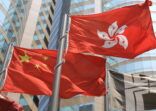Eastspring Investments, the asset management arm of UK insurer Prudential, scored a private fund management (PFM) license on 16 October and registered with the Amac. The firm now has to roll out at least one private fund product in the following six months.
The PFM fund strategy allows a fund to invest in onshore assets and permits its sale to a maximum of 200 domestic qualified (high-net-worth and institutional) investors.
Eastspring’s eight-member team in Shanghai runs an investment management wholly foreign-owned enterprise (IM WFOE), according to Asset Management Association of China (Amac) records.
The firm also appointed Michelle Qi as chief investment officer for Chinese equities, reporting to Michael Lu, general manager for the entity. In the newly-created role, Shanghai-based Qi oversees the entity’s equity investing based on a long-term and fundamentally driven approach. According to the firm’s statement, she joined from Bank of Communications Schroder Fund Management and previously worked for ING Barings Securities.
According to the Amac database, US-based hedge fund Bridgewater Associates and Hong Kong-listed Value Partners plan to bring in China equity funds under the PFM scheme, bringing a total of 20 products managed by global names.
Bridgewater, the $150bn hedge fund, received its license in June and created an onshore version of its all-weather risk-parity strategy for China’s professional investors. The fund was incepted on 9 October. The offshore equivalent for the strategy invests in an “all-China” approach.
Value Partners also registered with the Amac for its fourth long-only onshore A-shares fund. The firm now ranks as the top foreign PFM operator in terms of number of products, replacing Fidelity International.

Source: Amac, on 23 October. * Chinese name only.
QDLP activity
In addition to the PFM programme, global fund firms can sell to mainland institutions and high net worth investors using a qualified domestic limited partner (QDLP) structure. The registered QDLP entity is granted a certain amount of quota to run traditional or hedge funds investing outside of China.
Allianz Global Investors registered with the Amac to launch the Allianz Global Dynamic Multi Asset Strategy 50 Fund for onshore private investors. The fund is managed by Stefan Nixel. The Sicav version was launched in 2015 and has AUM of $138.4m as of 19 October, FE data shows.
Benchmarked to the MSCI World Total Return Index and the Bloomberg Barclays Capital Global Aggregate Bond Index, the fund allocates 86.9% to equities and 28.2% to bonds. The yield-to-worst (the lowest potential yield) was 1.64% at the end of September.
Meanwhile, the QDLP entities for JP Morgan and Morgan Stanley completed their registration process with Amac on 18 October, according to the association. In 2018, a total of 12 global asset managers have been granted the qualification (see chart below).
JP Morgan Overseas Investment Fund Management in Shanghai is headed by general manager Zhou Lingling who was previously a manager at Legg Mason.
Morgan Stanley poached from Blackrock for the role of general manager based in Shanghai. Matthew Zhu, who was previously Hong Kong-based vice president for wholesale distribution at Blackrock, joined the firm in August to head the five-person team.
Similar to new PFM license holders, JP Morgan and Morgan Stanley now face a six-month deadline to roll out their debut onshore products.

Source: Amac records on 23 October, 2018. The chart shows only the firms approved in 2018. * Chinese name only and literal translation provided.
HSBC targets China retail base
Separately, HSBC Investment Funds received its first approval to distribute a fund via the Mutual Recognition of Funds (MRF).
The mainland-Hong Kong fund passporting scheme allows SAR-domiciled funds to be sold in China, and vice versa.
The fund manager on 9 October was approved to distribute the Asia-Pacific ex-Japan Equity Volatility Focused Fund to retail investors, according to the China Securities Regulatory Commission (CSRC).
It is not the best time for a product launch. Year-to-September outflows for the 14 MRF-approved funds for sale in mainland China (northbound MRF) were RMB 3.3bn ($480.4bn), according to data from the State Administration of Foreign Exchange.
By contrast, there was a net inflow of RMB 2.92bn during the same period in 2017.
Thus, the MRF has had net outflows for nine months in a row since December 2017.
Performance of the HSBC fund versus category average


















